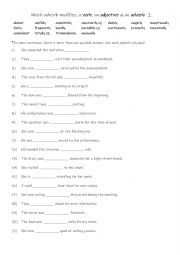
|
Which adverb modifies a verb, an adjective & an adverb 2
First, students need to familiarise themselves with the 21 adverbs and their meanings. Then they read the sentences to see which one is required to complete the gap-fill. Additionally, recognising whether it modifies a verb, an adjective & an adverb. Each type is modified 8 times! Answers on page 2.
Level: elementary
Age: 8-100
Type:
Downloads: 129
|
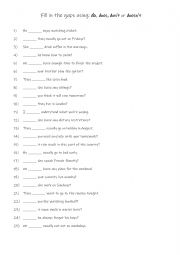
|
Fill in the gaps using: do, does, don�t or doesn�t
Students read and complete the sentences / questions using the correct form of auxiliary verb do. Answers are on page 2
Level: elementary
Age: 10-100
Type:
Downloads: 128
|
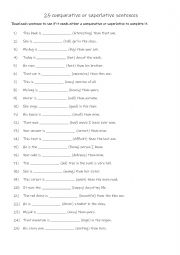
|
Comparative or superlative sentence practise 1 A
Students read each sentence to see if it needs either a comparative or superlative to complete it. Answers on page 2. In worksheet 1 B there is a generic speaking reinforcement activity using 25 of the base form adjectives in this worksheet.
Level: elementary
Age: 9-100
Type: worksheet
Downloads: 128
|
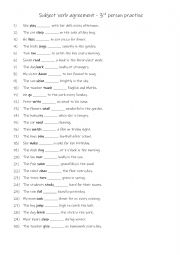
|
Subject verb agreement - 3rd person practise
This worksheet gives students valuable practise with 30 sentences, students see if they can identify if the verb is correct according to the subject as some sentences are correct. Answers on page 2
Level: elementary
Age: 10-100
Type:
Downloads: 128
|
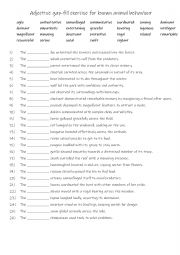
|
B2-C1 Adjective gap-fill exercise for known animal behaviour
Students need to read the sentence, then use one of the adjectives in bold to describe that animal�s normal behaviour. This worksheet is only suitable for B2-C1 level students due to the adjectives and vocabulary. Answers on page 2.
Level: advanced
Age: 12-100
Type:
Downloads: 128
|
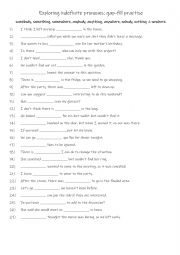
|
A2-B1 Exploring indefinite pronouns gap-fill practise
These words help students vary their language. For example, instead of saying "I don�t know anyone," students can say "I know nobody," which adds variety to their speech and writing. Using these words correctly can affect the tone of a conversation. For instance, "Could you give me something to drink?" sounds more polite than "Give me a drink." B...
Level: elementary
Age: 10-100
Type:
Downloads: 128
|
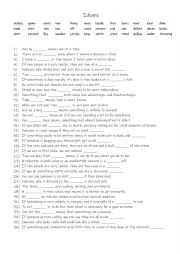
|
B2-C1 36 Idioms
Idioms reflect cultural nuances and expressions that might not be obvious from direct translations. Understanding them helps students grasp the subtleties of the language and culture. Idioms often carry a humorous or informal tone, which can enhance social interactions and help students connect with others in a more relatable way. Recognising them ...
Level: advanced
Age: 12-100
Type:
Downloads: 128
|
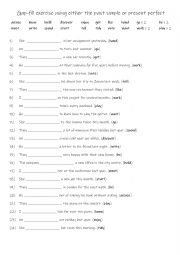
|
A2+ -B1 Gap-fill exercise using either the past simple or present perfect - Copy
Students read the sentences and complete the gap-fill with the correct form using the word in bold. For more able students you could remove the word in bold at the end of each sentence to make it more challenging.Answers on page 2.
Level: elementary
Age: 8-100
Type:
Downloads: 128
|
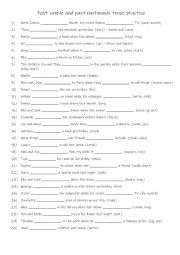
|
A2 Past simple and past continuous tense practise
Students read the sentences looking for markers to indicate which tense should be used, they then complete the gap-fill using either the past simple or past continuous tense and the past of infinitive in bold. You could make it more challenging by removing the infinitive in () and let them complete it with another suitable verb. Answers on page 2.
Level: elementary
Age: 8-100
Type:
Downloads: 128
|
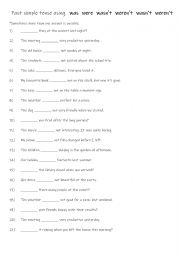
|
A1-A2 Past simple tense using: was, were , was not, were not, was not & were not
Students familiarise themselves with the past forms of verb to be. Then they read the sentences to see which form is needed to complete the sentences. Answers on page 2.
Level: elementary
Age: 8-100
Type:
Downloads: 128
|












